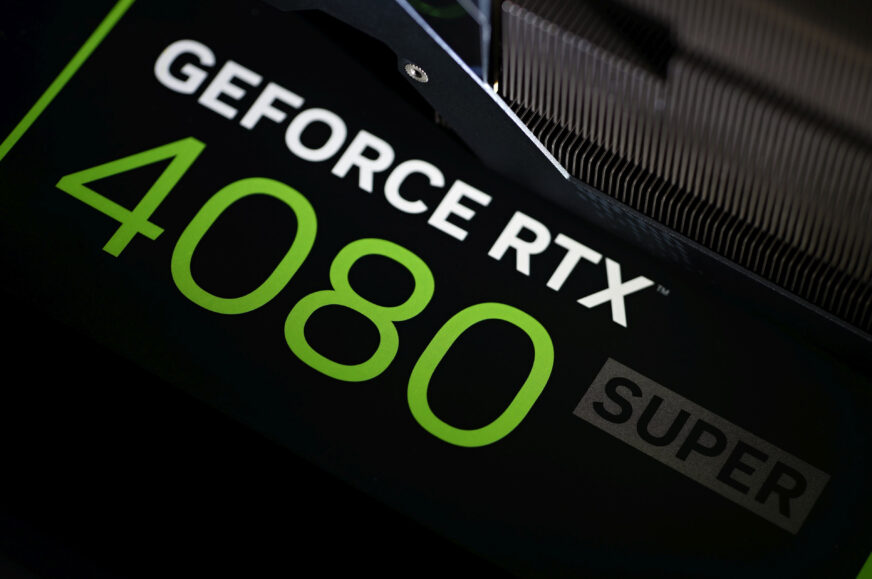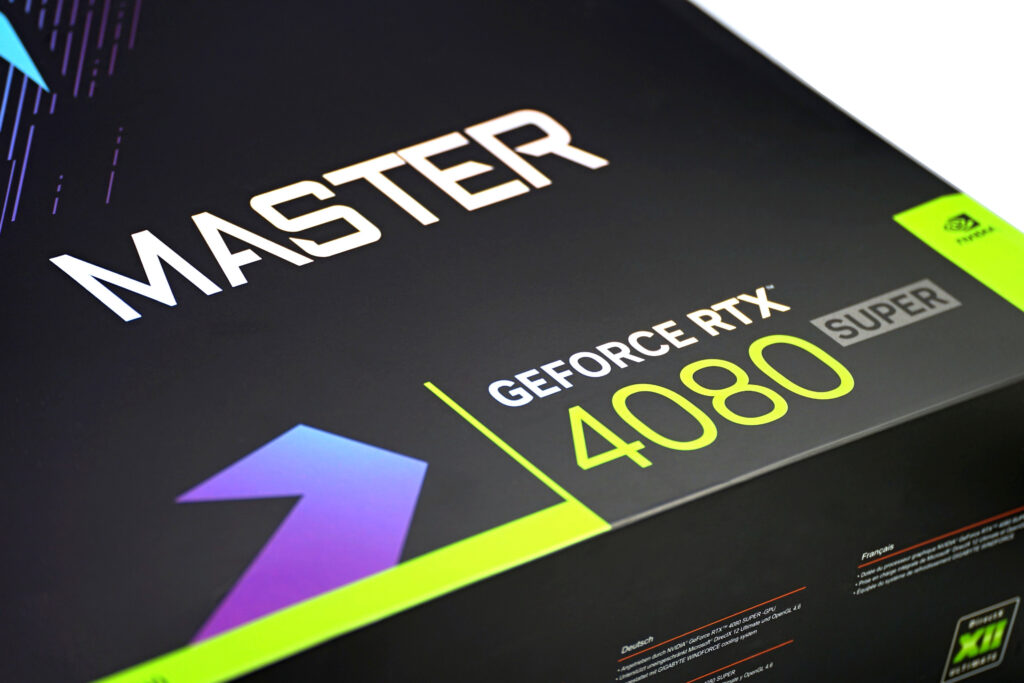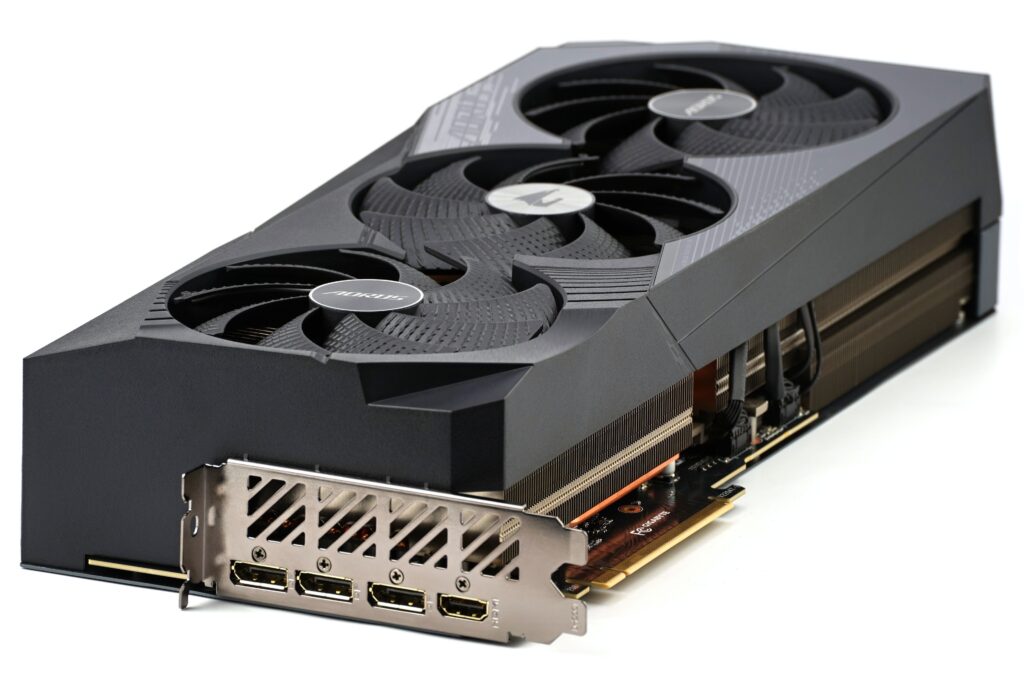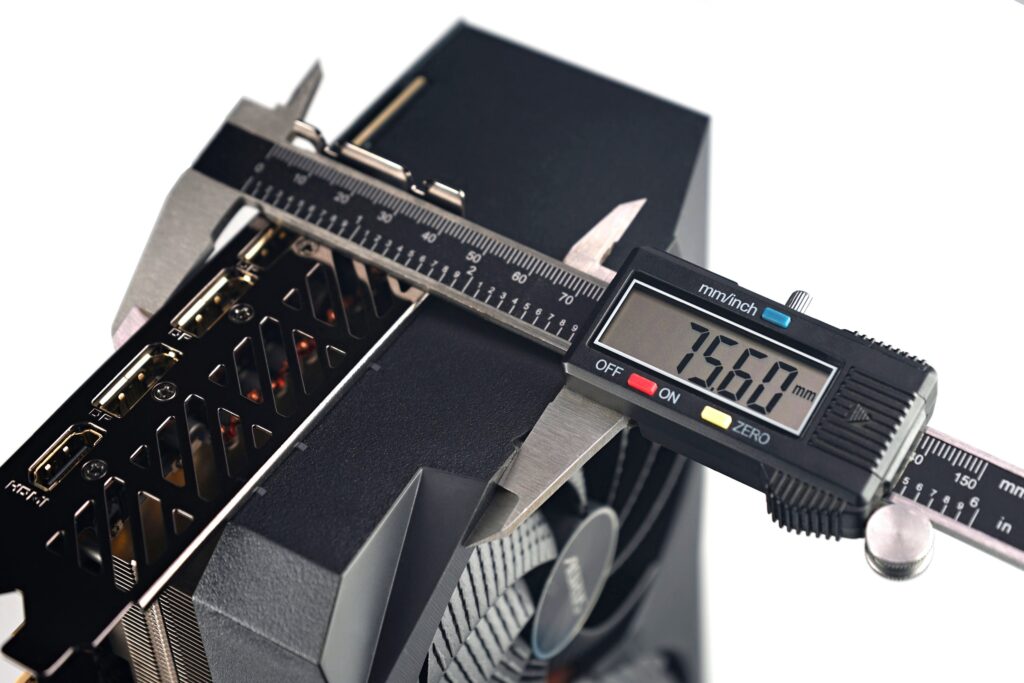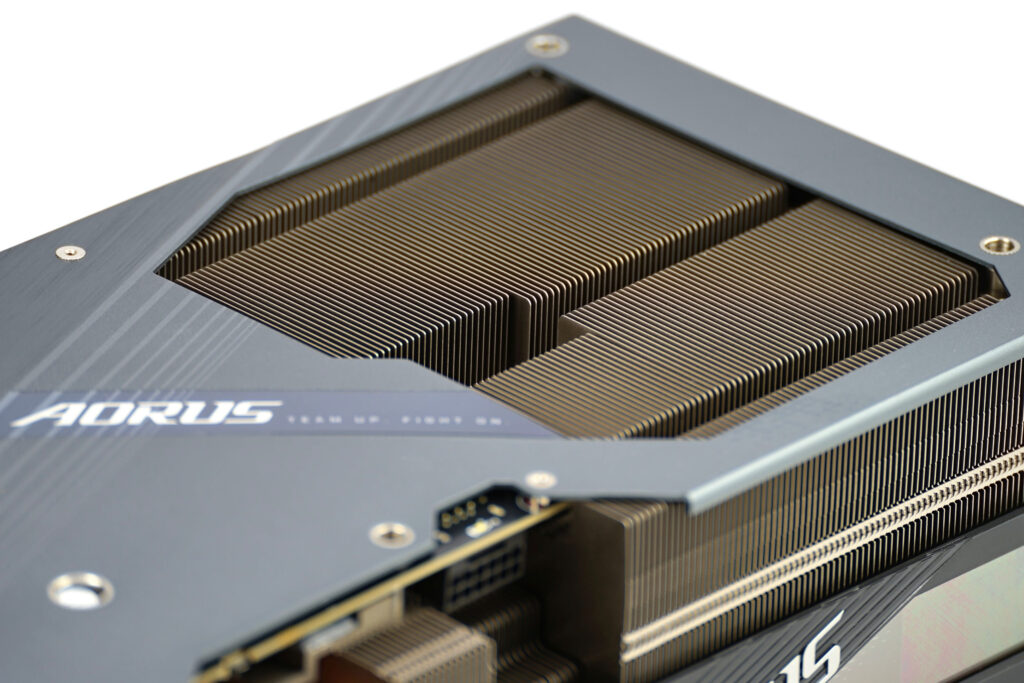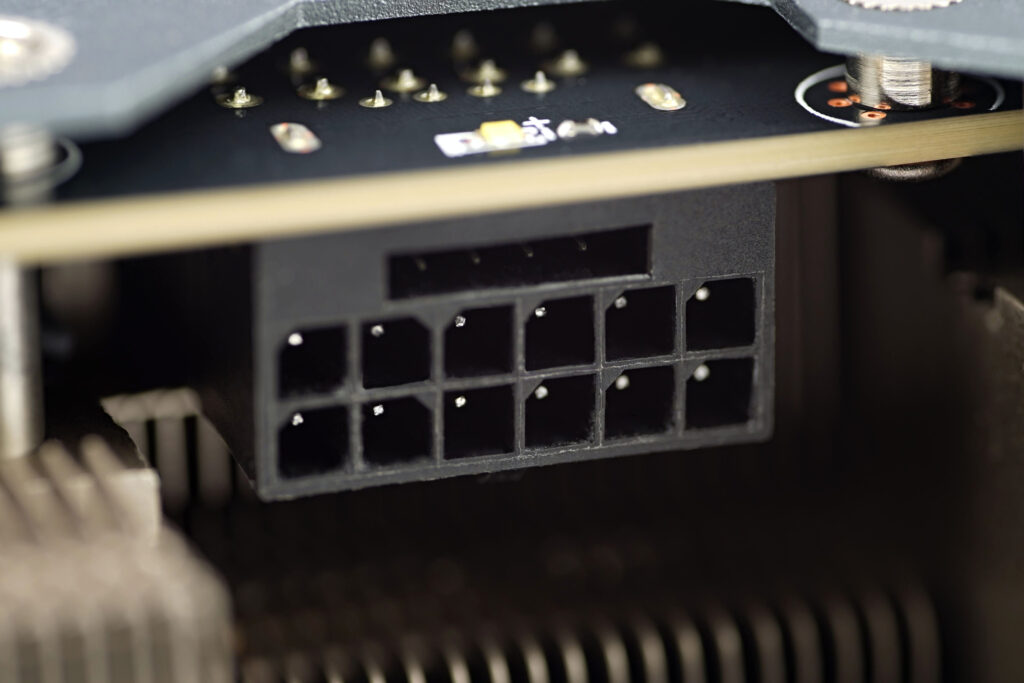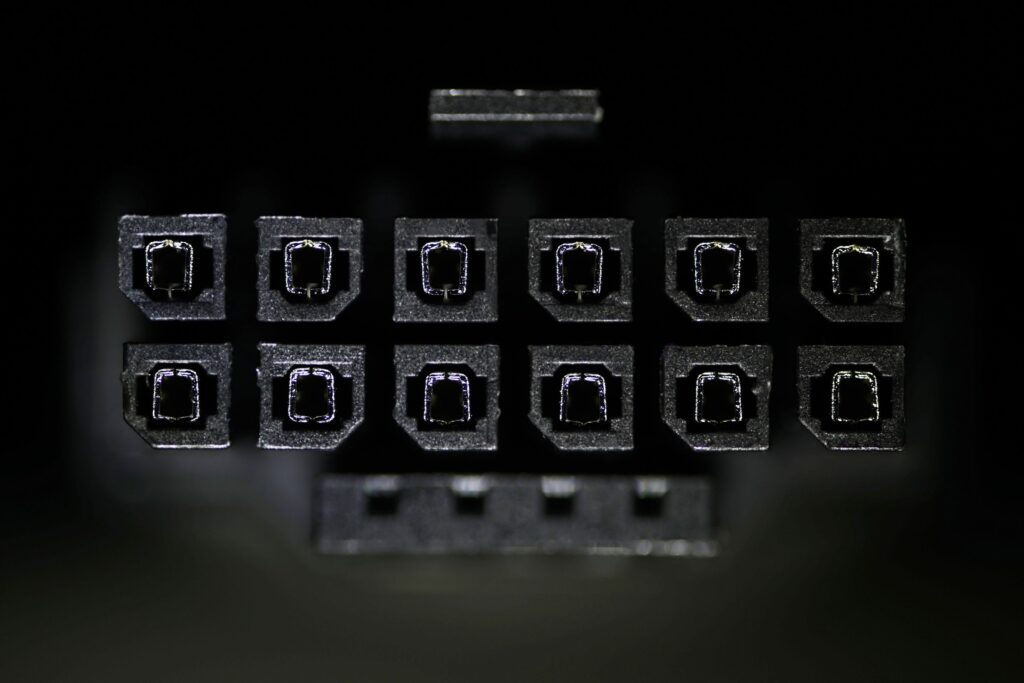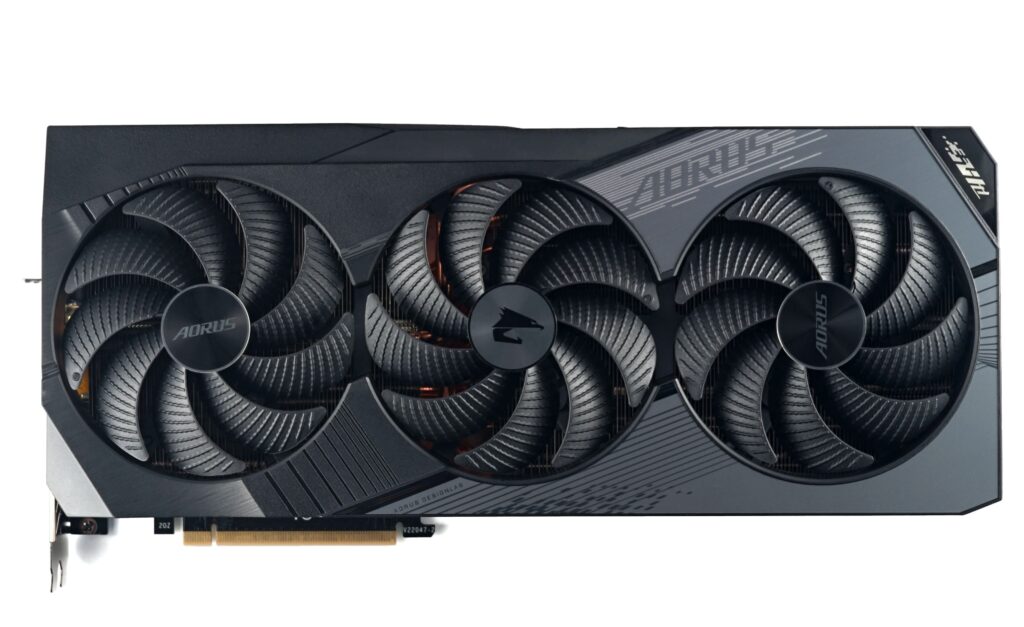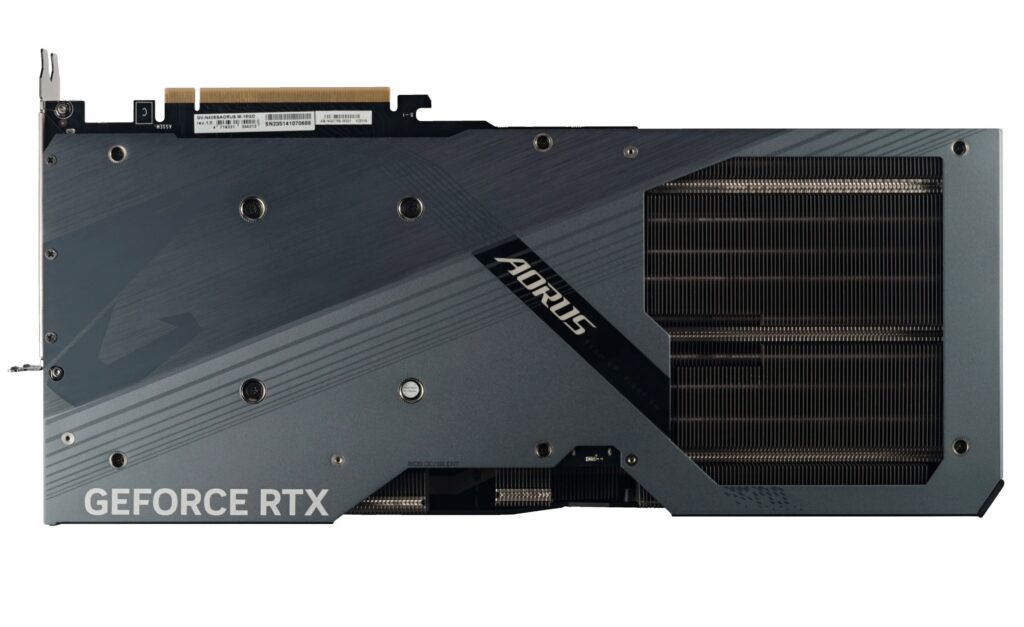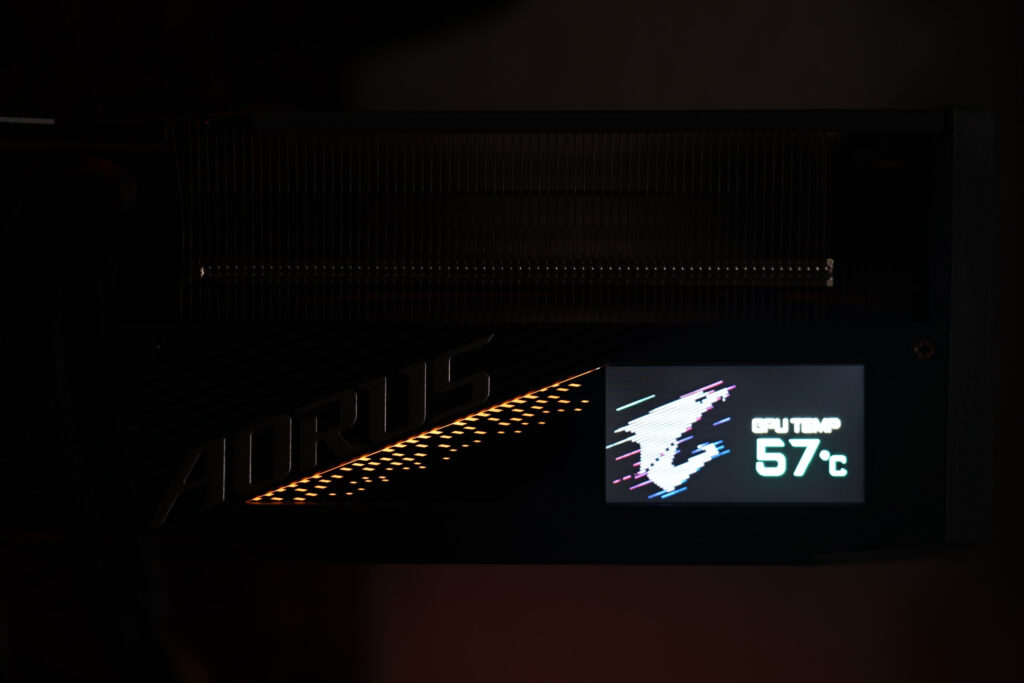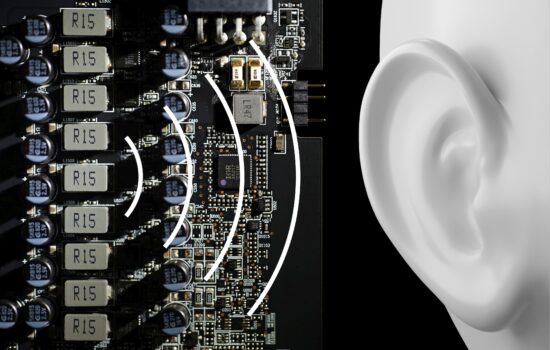Gigabyte Aorus RTX 4080 Super Master 16G in detail
The new RTX 4080 in the Super variant attacks the competing Radeon (RX 7900 XTX) fiercely in every way. Their advance is not only due to faster GPUs (versus the non-Super RTX 4080), but also for higher memory bandwidth. Of all the GeForces built on Nvidia’s Ada Lovelace architecture, the latter is the highest on the RTX 4080 Super. On top of that, the RTX 4080 Super in the tested Aorus Master 16G variant is a truly extreme graphics card.
After the RTX 4070 Super and RTX 4070 Ti Super, the RTX 4080 Super is also now being released.The latter is the last graphics card in the RTX 4000 generation with the Super moniker. Compared to the RTX 4080, there is the smallest increase in the number of SM blocks, only by four (+512 shaders). But part of the increase in performance is also due to the increased GPU clock speeds (it is otherwise the same as in the RTX 4080, i.e. the AD103).But this is only true for non-reference cards, and reference variants can be slower in this regard, and often are. If only because the TDP hasn’t changed, it’s 320W (as with the RTX 4080) and given the higher power draw of the RTX 4080 Super due to the increase in number of shaders alone, it’s only natural that when hitting power limits, the GPU tends to be slower in terms of clock speeds.
And then there’s one more thing that increases memory bandwidth, even though the bus is the same as the RTX 4080 – a 256-bit one. The difference is that the RTX 4080 Super has about 9.5% faster GDDR6X memory (2.3GHz). The bandwidth of this memory is also higher compared to the RTX 4090, though of course, due to the narrower memory bus, the overall memory bandwidth of the RTX 4080 Super is lower.The size of the video memory here is 16 GB. The complete parameters can traditionally be found in the detailed table in the second chapter of this article.
Gigabyte Aorus RTX 4080 Super Master 16G in detail
Aorus Master is the highest-end design from Gigabyte. This is reflected in the price, which for this RTX 4080 Super is about 200 EUR above MSRP (1100 EUR). Whether or not this premium makes sense will be up to each individual. It depends on whether you can utilize the added value that this graphics card comes with. And what is it?
The physical characteristics of the RTX 4080 Super Aorus Master 16G are almost to the point of being, we’re not afraid to write it, “insane”. A weight of 2436 grams, a length of 357 mm.
So measure well if you can fit such a long graphics card in your case. And definitely don’t stop at the length, check the width, i.e. the available distance from the PCIe slot to the side panel. At 163 mm, the width of the Aorus RTX 4080 Super Master 16G is on par with tall tower coolers. If your case has any height restrictions for mounting a cooler, it’s almost certain that you’ll run into them with this graphics card as well. That is, unless you choose vertical mounting instead of horizontal mounting. But even then, you’ll probably run into incompatibilities.
It is also a thick card (76.5 mm), which in our case even clashed with the taller M.2 SSD heatsink at the level of the fifth slot. So it’s better not to have anything exceeding the height of the slot itself under the RTX 4080S Master 16G. And if you do, then all the way down on an ATX board, in the last PCI Express slot.
Aside from the limitations imposed by the excessive dimensions of the graphics card, you will encounter virtually no design compromises. Gigabyte has done everything to the highest possible standard. The backplate covers the entire PCB area, but from an overall perspective it’s only 2/3 of the footprint. A third is actually made up of a larger window, which serves to more quickly remove heated air from the heatsink’s fins.
The heatsink, by the way, is gigantic; the surface area of its fins must be enormous. The waste heat from the GPU, memory and VRM is conducted to it via a network of heatpipes from a vapor chamber, which is the foundation of this cooler.
With the implementation of this type of base, there is a more even distribution of heat over the critical components (than in the case of all-copper blocks), but the question is what about the speed of heat dissipation. The latter may not be any higher, but either way this is a cooler with extremely high thermal performance that has enough margin for the RTX 4080 Super even to run very quietly as well.
As far as the noise level is concerned, there is a switch on the side of the card that allows you to choose between two BIOSes – OC and Silent. The second option means, in particular, a lower noise level (within our methodology it is depending on the situation minus 2.5–3.5 dBA), with which the RTX 4080 Super Master 16G ranks clearly among the quietest graphics cards with comparable power draw.
Gigabyte does refer to the second BIOS as “OC”, but the maximum GPU clock speeds for the boost are set the same, at 2625 MHz. Thus, BIOS Silent only means quieter operation with no drop in speed. For consistency with other graphics cards that we always test with the BIOS appearing “more powerful” we use the “OC” BIOS in our standard measurements in this case.
All three fans are in an extra-large, 110-millimeter format (with a profile height of 15 mm). The surface of the intake side of the blades is characterized by protruding grooves, or channels, which are designed to eliminate unwanted microturbulence and thus increase cooling efficiency. In other words, greater airfow is to be achieved at the same time as lower noise levels. To support this in the environment in which the fans operate (i.e. on the radiator) the blades are quite densely packed to keep the static pressure as high as possible to minimize the loss of airflow through the obstacle.
The external power supply is implemented via a newer type of 16-pin connector – the 12V-2×6. You can recognize this one by shorter sense pins, which do not allow operation when the connector is not inserted well enough. In connection with this connector we can talk about the safest solution ever used in computers.
The accessories also include an adapter for owners of older power supplies that do not have native 12VHPWR/12V-2×6 connectors. This connects to three PCI Express 8-pins, these are already on all power supplies that are capable of powering the RTX 4080 Super.
To mechanically lighten the PCI Express slot and achieve horizontal mounting, which is also important for some for aesthetic reasons, you will also find a brace in the box that supports the graphics card.
The Aorus RTX 4080 Super Master 16G not only has ARGB LED ring lighting around each fan, but also a 2″ LCD display. This can optionally display any GIF, text, or you can simply use it to monitor, for example, GPU temperature or utilization, or alternatively GPU clock speed etc.
Please note: The article continues with following chapters.
- Contents
- Gigabyte Aorus RTX 4080 Super Master 16G in detail
- Table of parameters
- Methodology: performance tests
- Methodology: how we measure power draw
- Methodology: noise and sound measurement
- Methodology: temperature tests
- Test setup
- 3DMark
- Age of Empires II: DE
- Assassin’s Creed: Valhalla
- Battlefield V
- Battlefield V with DXR
- Borderlands 3
- Control
- Control with DXR and DLSS
- Counter-Strike: GO
- Cyberpunk 2077
- Cyberpunk 2077 with DLSS
- Cyberpunk 2077 with DXR (and DXR with DLSS)
- DOOM Eternal
- F1 2020
- FIFA 21
- Forza Horizon 4
- Mafia: DE
- Metro Exodus
- Metro Exodus with DXR and DLSS
- Microsoft Flight Simulator
- Red Dead Redemption 2 (Vulkan)
- Red Dead Redemption 2 (Dx12)
- Shadow of the Tomb Raider
- Shadow of the Tomb Raider with DXR
- Total War Saga: Troy
- Wasteland 3
- Overall gaming performance and performance per euro
- CompuBench (OpenCL)
- SPECviewperf 2020 and SPECworkstation 3
- FLOPS, IOPS and memory speed tests
- 3D rendering 1/2 (LuxMark and Blender@Cycles)
- 3D rendering 2/2 (Blender@Radeon ProRender and Eevee)
- Photo editing (Adobe Photoshop, Lightroom and Affinity Photo)
- Broadcasting (OBS and Xsplit)
- Password cracking
- GPU clock speeds
- GPU and VRAM temperatures
- Net graphics card power draw and performance per watt
- Analysis of 12 V rail power supply (higher load)
- Analysis of 12 V rail power supply (lower load)
- Analysis of 3,3 V rail power supply
- Noise level
- Frequency response of sound
- Conclusion





